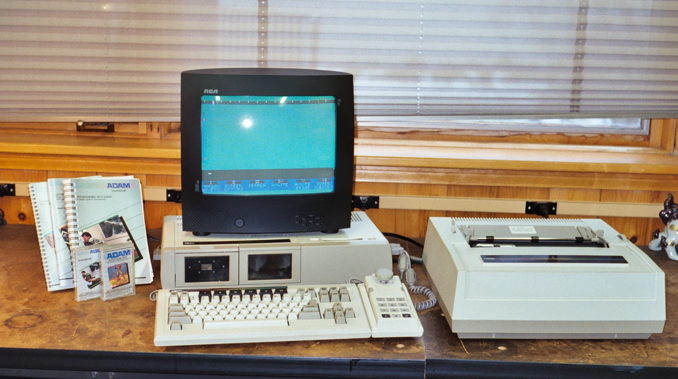
There are poor engineering decisions. Then there’s the Pinto. Somewhere way beyond that lies the Coleco ADAM.
Coleco was, in the early 1980s, on top of the computer game industry. Their “Colecovision” was one of the best home game products on the market, with a large stock of available games and design features comparable to the Atari 5200. In early 1983, Coleco launched the ADAM: a hybrid machine that played all Colecovision games and was also a functioning personal computer. The computer had 80K of memory, 16 more than the popular Commodore 64. It even came with a printer. The ADAM was eagerly anticipated.
That anticipation lingered. Although the initial launch was supposed to occur in the first half of the year, production issues caused the actual release date to be pushed back until October. Even then, many of the systems which went to stores were defective… estimates at the time were that more than 1/3 of the machines failed to turn on. It wasn’t until after Christmas that the production problems were corrected, and by that time the product had already developed a bad reputation.
Still, the machine’s promises would be enough to reverse the damage, if the promises could be kept. To Coleco’s credit, the internal Colecovision system worked perfectly. It was the other components which triggered complaints.
The machine was powered through the printer, which meant that the printer needed to be on whenever the computer was on. The printer was loud; a constant hum emanated from it when it wasn’t in use, and when it was printing anything the daisy-wheel operation could be heard from fifty feet away. The volume wasn’t ideal for an office setting; for a private home it was a serious problem.
The computer programs were stored on “digital data packs”. These were high-speed cassettes using proprietary technology. While other computer systems like IBM and the IBM clones often used cassettes, the media was cheaply available. Digital data packs were expensive and difficult to find outside of authorized retailers.
That 80K? It was actually a standard 64K of usable memory, but had an additional 16K cache of hardwired information available for things like control coding for the printer.
Worst of all, the manual warned the ADAM owners to insert the digital data packs before turning the computer on. This is because the drives would start to spin immediately upon gaining power, and having the packs inside would prevent people from having to wait more than two minutes for the internal poles to stop spinning before they could start using any programs. On the surface this doesn’t seem like a terrible problem, but that loud hum from the printer was associated with a large magnetic field the printer was generating upon initial powering. Putting the digital data packs in before the ADAM was turned on often resulted in the software on them being wiped clean.
The Coleco ADAM was discontinued in January 1985, little more than a year after it had been released to the public. Due in large part to the ADAM’s utter failure, the company itself folded in 1988 despite having been in operation since the 1930s.
Question of the night: What was your favorite computer game system?
